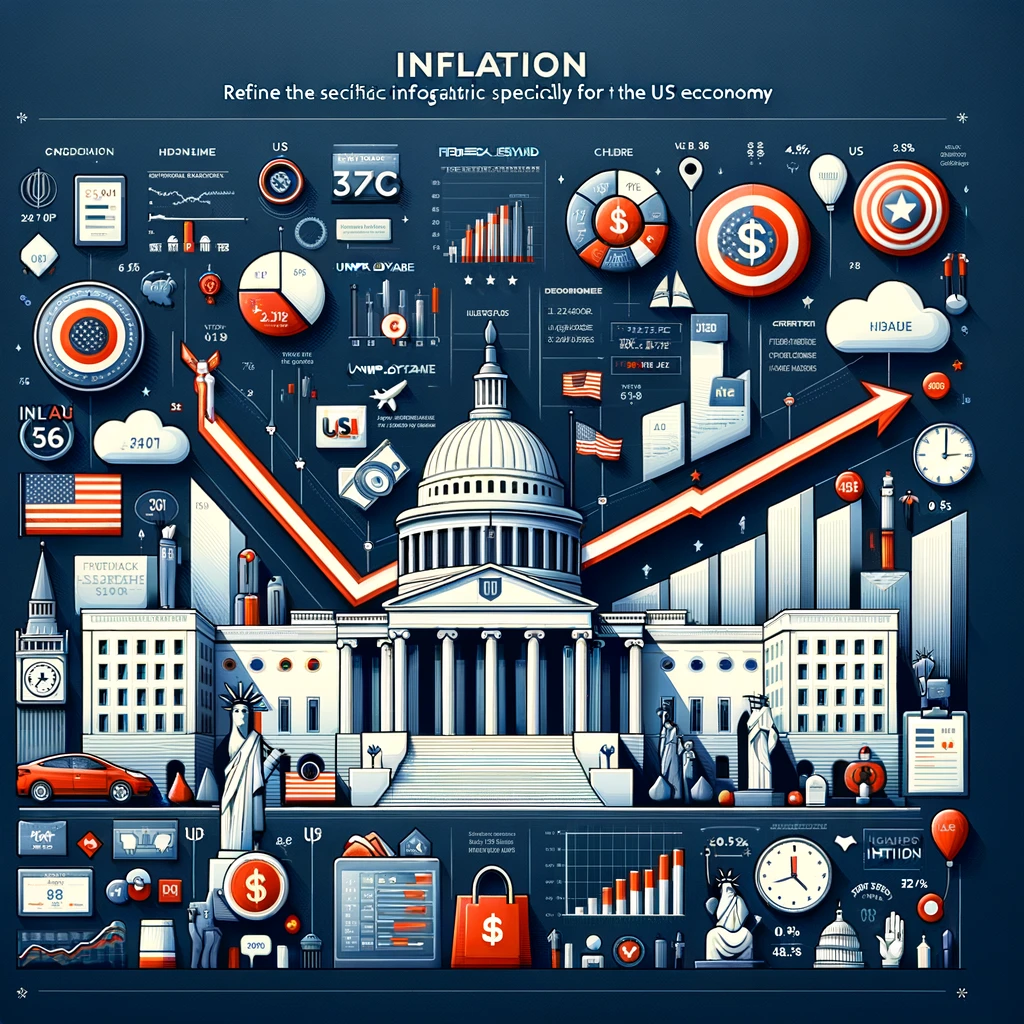Navigating the Complexities of US Inflation: A 2023 Overview
2023-02-06

US Consumer Price Index Shows Steady Rise in Inflation Throughout 2022
The latest monthly data on the Consumer Price Index (CPI) for All Urban Consumers All Items in U.S. City Average shows a clear upward trend in inflation. Starting from January 2022 at 7.5%, the year-over-year change in CPI peaked at 9.0% in June 2022, indicating a significant increase in the general price level of goods and services. While there was a slight dip in October and November 2022, with rates of 7.7% and 7.0% respectively, the year ended with the CPI at 6.4% in December 2022. This contrasts sharply with the average year-over-year changes in previous years, particularly in 2021 and 2022, where inflation rates have far surpassed historical levels. The surge in inflation could have wide-ranging implications, including reduced purchasing power for consumers, potential interest rate hikes by the Federal Reserve to curb inflation, and increased production costs for businesses. These elevated inflation levels indicate substantial changes in consumer spending behaviors and could impact savings and investment decisions. The deviation from previous trends underscores the need for careful monitoring and prudent economic decision-making in the coming months to manage the potential effects of high inflation.
Sticky Price Consumer Price Index Shows Unprecedented Volatility in 2022, Signaling Uncertainty in U.S. Inflation Outlook
The Sticky Price Consumer Price Index tracks changes in prices for goods and services that infrequently change, providing insight into future inflation expectations. Examining the latest data, a stark deviation is notable as the year-over-year change for April 2022 plunged to 107.9%, followed by a further decrease to 90.2% in May 2022, before rebounding to 108.3% in June 2022. This rollercoaster pattern continued into July and August with values of 139.4% and 152.7% respectively. September and October saw a decline to 140.2% and 108.6% before plummeting to 100.8% in November and 88.9% in December 2022. This erratic behavior sharply contrasts with the more stable trend over the previous years, which saw fluctuations between negative and positive values without such extreme swings. This significant divergence could indicate uncertainty and volatility in the U.S. inflation outlook. The abrupt decline in the latter half of 2022 may prompt further scrutiny of inflationary pressures and their potential to impact consumer purchasing power and investment decisions. It's evident that these fluctuations bear close monitoring to assess their implications for the broader economy.
Fluctuating Trend in U.S. Consumer Inflation Expectations Amid Economic Influences
The latest University of Michigan Survey of Consumers data on inflation expectations shows a fluctuating trend in the median expected price change over the next 12 months. In January 2023, the median expectation decreased to 3.9% from 4.4% in December 2022, with a general downward trend from the 5.4% high in March and April 2022. These numbers indicate that consumers have anticipated a lower rate of price increase over the coming year than in previous months. This change may suggest a shift in consumer sentiment regarding inflation, potentially influenced by various economic factors such as supply chain disruptions, energy prices, and changes in consumer spending patterns. The downward trend in inflation expectations, if realized, could have implications for the overall inflation rate in the U.S. This could also impact monetary policy decisions by the Federal Reserve and have broader effects on financial markets and consumer behavior. It's important to continue monitoring these expectations alongside other economic indicators to gauge the potential trajectory of inflation in the near future.
February 2024 Breakeven Inflation Rates Show Moderate Expectations Across Time Horizons
The latest monthly data on the Breakeven Inflation Rate, sourced from the Federal Reserve Bank of St. Louis, for February 2024, reveals the following rates: 5-Year at 2.35%, 10-Year at 2.3%, and 30-Year at 2.24%. The breakeven inflation rate is a crucial measure of expected inflation, calculated from the difference between Treasury Constant Maturity Securities and Treasury Inflation-Indexed Constant Maturity Securities. These latest figures indicate a moderate level of expected inflation across different time horizons, with the 5-year rate slightly higher than the 10-year and 30-year rates. This suggests a certain level of confidence in near-term inflation expectations compared to the longer term. It's worth observing how these rates evolve over time to gauge market sentiments and anticipate potential impacts on investment decisions and monetary policy.
January 2023 Expected Inflation Rates and Trend Analysis by Time Horizon
The latest monthly data from the Federal Reserve Bank of Cleveland provides insight into the expected inflation rates for various time horizons. In January 2023, the expected inflation rates were estimated as follows: 1-Year: 2.66%, 2-Year: 2.47%, 5-Year: 2.3%, and 10-Year: 2.27%. These estimates are derived from a model that incorporates a comprehensive range of data sources, such as Treasury yields, inflation data, inflation swaps, and survey-based measures of inflation expectations. The data indicates that the expected inflation rates have moderated across different time horizons, with a general downward trend as the time horizon extends. This suggests a level of confidence in the stability of future inflation, albeit at a moderate level. It's crucial to note that these expected rates are subject to change based on a multitude of economic factors, and monitoring future updates will be essential for anticipating potential shifts in inflation expectations.
